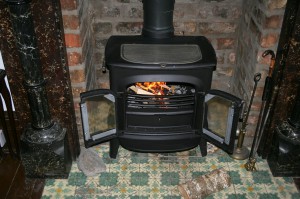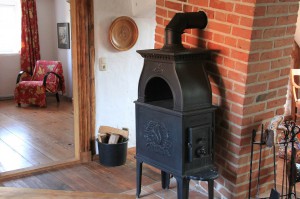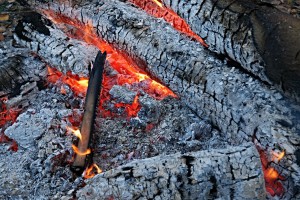As the temperatures begin to drop and the sun falls lower in the sky, home heating becomes more and more necessary. As fall progresses, taking the time to assess your home heating needs is important for comfort and reliability later in the year when winter weather hits hard. Basic maintenance and inspections of central heating systems is important for reliable operation during the colder months.
In many northern regions, many people have wood burning stoves and fireplaces inside their homes. Maintaining these features and taking safety steps when operating these stoves is also an important part of getting your home ready for winter. Here are a few top home heating safety tips for wood burning stoves and fireplaces.
Clean the Chimney and Stove
The most essential part of maintaining the safety and efficiency of wood burning stoves and fireplaces is regular cleaning. Chimneys are the first and most important structure to clean since a chimney full of creosote represents a real fire hazard for the entire house. Having your chimney inspected and professionally cleaned once a year will prevent this buildup and reduce the risk for fire when operating a wood burning stove.
This is also an important maintenance step for fireplaces. Even infrequent burning can lead to a buildup of ash and soot in the chimney and require a thorough cleaning. Taking these basic precautions will help to ensure that your chimney is safe for regular use in the winter months.
Prepare the Surrounding Area
Getting the interior of your home ready for winter heating is just as important as preparing the stove and chimney for use. Relocating flammable items and anything that could become a fire hazard before operating the stove is important. Books, papers, magazines, or any flammable liquids should be relocated a sufficient distance from the stove or fireplace before burning.
You should also have a home fire extinguisher on hand. This is a good practice regardless of whether you operate a wood burning stove since fires could occur for a variety of reasons–from kitchen fires to electrical shorts. Keep a small fire extinguisher nearby when operating a wood burning stove as a last resort.
Completely Extinguish Fires
Much like completely putting out a campfire before you go to bed, be sure to completely extinguish fires in wood burning stoves and fireplaces before going to bed or leaving the house. This is a basic safety precaution that should be observed as part of your routine when keeping open flames indoors. Not only should you put out all of the flames, you should smother and extinguish all embers and shut the stove or fireplace doors and vents. This will prevent drafts from reigniting an ember and blowing it into living quarters, potentially igniting nearby items.
Wood burning stoves and fireplaces are great features to have during the cold winter months. They provide an enjoyable warm ambiance and can help reduce reliance on furnace based heat, but be sure to clean and inspect these devices before winter and take basic fire prevention steps when operating.




Comments are closed here.